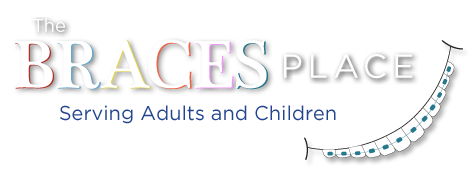Invisalign has REAL LIMITATIONS – just ask any orthodontist!
Let’s be clear: I LOVE INVISALIGN….about as much as I love a screwdriver.
If I have a screw, I love my screwdriver. But if I have a nail, I love my hammer.
It is a question of INSTRUMENT PREDICTABILITY. And Invisalign (or any removable aligner system) PREDICTABLY fails and succeeds based on the 4 limits I have outlined below.
THE 4 PRIMARY DIFFERENCES BETWEEN INVISALIGN & BRACES CAPABILITIES:
1. Invisalign cannot predictably control any changes in back tooth bite relationships. In fact, it can really cause back tooth bite problems if you try to move the back teeth and fall short of your goals. Braces can control back tooth bite relationships readily.
2. Invisalign cannot predictably rotate cylindrical teeth (such as canines and premolars) because it lacks predictable “friction grip”, but invisalign can readily rotate angular teeth, such as incisors, because this does not require grip….it only requires point force at a distance away from the center of the tooth. Example: USING 1 finger from EACH hand, try to turn a drinking glass that is cylindrical versus one that has 4 sides. With the cylindrical glass, you will need to try to squeeze your fingers toward each other (producing friction grip) to rotate the cylindrical glass. With the 4 sided glass, you only need to apply forces in opposite directions at the square corners of the glass….no friction grip needed. That is why Invisalign cannot rotate cylindrical objects predictably. Braces, on the other hand, are glued to teeth, and therefore have absolute friction, and can thereby rotate any tooth. Voila!
3. Invisalign cannot predictably accomplish uprighting root movements: I don’t know how to effectively communicate that in text. It would require a picture. Braces accomplish this readily.
4. Invisalign cannot predictably accomplish vertical movements, as the aligner is designed to release in the vertical plane of space. Braces accomplish this readily.
Bottom Line: I love invisalign for patients that do not need Bite correction, rotation of cylindrical teeth, root uprighting, or vertical tooth movements.
Of course, I should also note that the Invisalign company knows these limits. As such, they have produced “buttons” (glued onto teeth like braces) that are meant to “improve” these weaknesses. But I find these buttons very inefficient, and often ineffective. So while some cases will demonstrate success, I would not allow my patients to be exposed to cases that have the above 4 problems, regardless of the “button” attempt…..as it is truly just an attempt. And the idea of “attempting” something is not my approach to healthcare. Not when esthetic “braces” options can predictably solve all the orthodontic problems.
It is a question of PREDICTABILITY you see. And Invisalign PREDICTABLY fails and succeeds based on the 4 limits I have outlined above.




